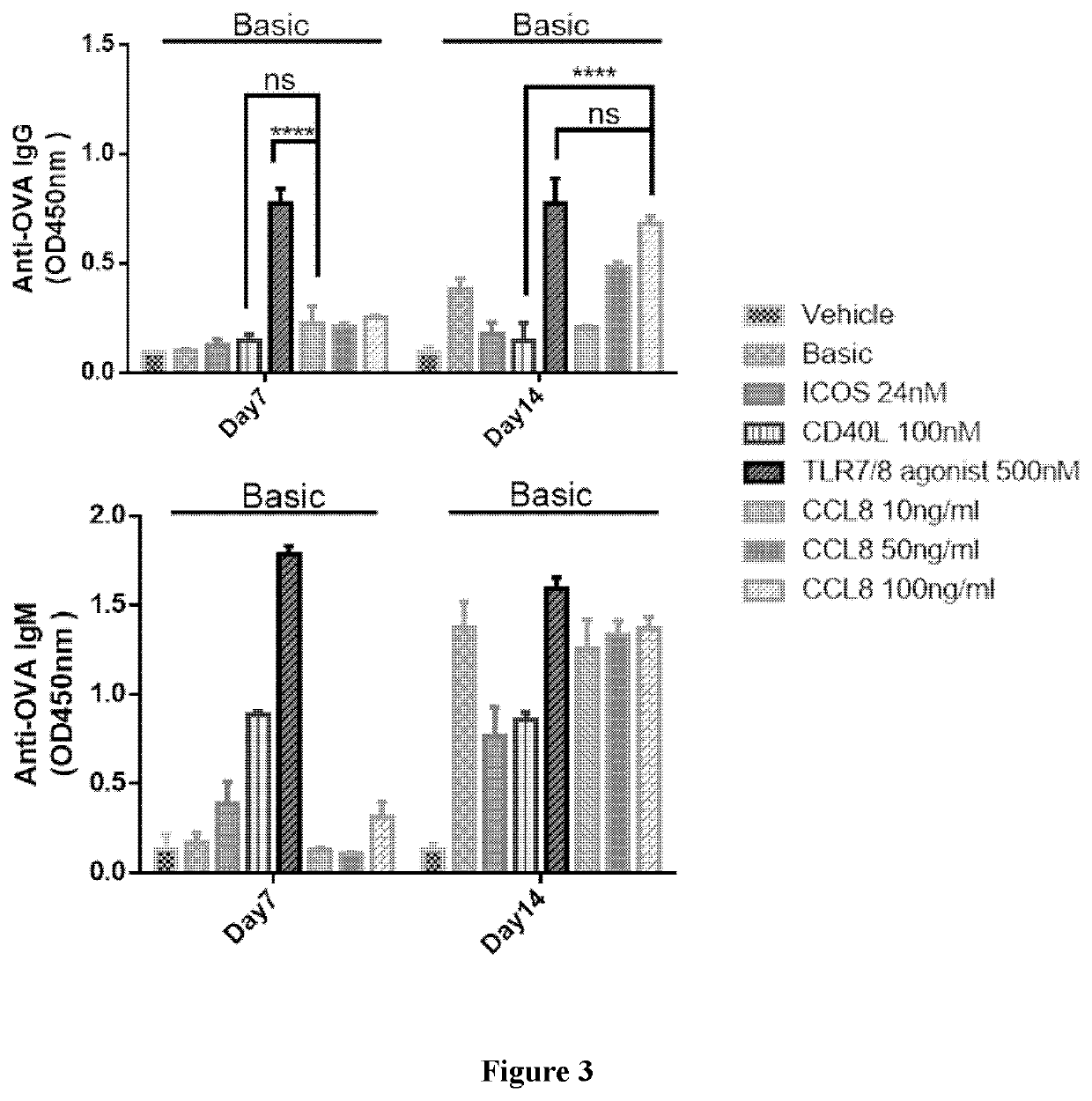Novel method for producing antibodies
a technology of antibody and production method, applied in the field of new methods for producing antibodies, can solve the problems of long production cycle, unpredicted pair of heavy chain and light chain variable region, high cost, etc., and achieve the effect of stimulating antibody production, stimulating antibody production, and stimulating antibody production
- Summary
- Abstract
- Description
- Claims
- Application Information
AI Technical Summary
Benefits of technology
Problems solved by technology
Method used
Image
Examples
example 1
Materials and Methods
[0240]Materials:[0241]LSM Lymphocyte Separation Medium (MP, cat.V0111A)[0242]LLME: L-leucyl-L-leucine methyl ester (BacheM, cat.G-2550.0001)[0243]Ham's F-12 Nutrient Mixture (Gibco, cat.11765047)[0244]Heparin anticoagulation tube (BD, cat.367878)[0245]Disposable blood collecting needle (BD, cat.367237)[0246]IL2, Interleukin-2, lymphokine, TCGF (sinobiological, cat.11848-HNAY1-50) BCGF-1, BCGF1, BSF-1, BSF1, IL-4, Interleukin-4 (sinobiological, cat.GMP-11846-HNAE-100)[0247]CD154, CD40 Ligand (sinobiological, cat.10239-H01H-50)[0248]OX40L (sinobiological, cat.13127-H04H-100) Human ICOS Ligand / B7-H2 / ICOSLG (Histag) (sinobiological, cat.11559-H08H-100)[0249]Human ICOS / MUM / CD278 Protein (His & Fc Tag) (sinobiological, cat. 10344-H03H-100)[0250]Human Interleukin-21 / IL21 (sinobiological, cat.GMP-10584-HNAE-20)[0251]Human BLyS / TNFSF13B / BAFF (sinobiological, cat.10056-HNCH-5)[0252]Ephrin-B 1 (sinobiological, cat.10894-H08H)[0253]Goat anti-Human IgG-Fc (HRP) (sinobiologic...
example 2
Effects of the Antibody Production Stimulating Factors
[0307]As described in WO2018 / 205917, the in vitro expansion of PBMCs includes antibody-producing B cell, T cell, dendritic cells and adipocytes can form the germinal-center like structure in in vitro culturing system. IL2, IL21, ICOSL, ICOS, CD40L and toll-like receptor (TLR) agonists were proved to have stimulation effects on the antibody production in B cells.
[0308]Specifically, in the in vitro antibody production system, IL2 and / or IL21 promotes the proliferation of the PBMCs, including B cell, T cell and dendritic cell populations (see FIGS. 1 and 3 of WO2018 / 205917); IL21 also promotes the class switch from IgM to IgG (see FIG. 3A-3B of WO2018 / 205917); both ICOSL and ICOS can induce antibody level produced by B cells, while ICOSL and CD40L synergistically enhance the IgG production, rather than ICOSL or CD40L alone (see FIG. 2A-2B and 4A-4B of WO2018 / 205917).
[0309]In addition, the TLR agonists (such as synthesized TLR7 / 8 ago...
example 3
Identification of Adipose Tissue-Derived Proteins that Enhance Antibody Production
[0316]In searching for adipose tissue-derived proteins that could stimulate antibody generation, RNA seq analyses were performed to identify genes up-regulated in lymph node-associated adipose tissues after immunization with an antigen. Total RNA from the adipose tissues with or without immunization were subject to differential gene expression analysis through RNA-seq techniques.
[0317]Using “2-fold increase” as a cut-off criterion, a total of 273 genes were up-regulated from the adipose tissues after immunization (see FIG. 1). Among those, 69 genes encode secretory proteins. A detailed analysis indicates that these secretory proteins fall into three categories: cytokines, chemokines, and cell-adhesion molecules, which are listed in Table 1.
TABLE 1A complete list of adipose tissue-derived secretory proteinssignificantly up-regulated after immunization.Log 2 FoldClassificationGene NameFold ChangeChangepv...
PUM
| Property | Measurement | Unit |
|---|---|---|
| concentration | aaaaa | aaaaa |
| concentration | aaaaa | aaaaa |
| concentration | aaaaa | aaaaa |
Abstract
Description
Claims
Application Information
 Login to View More
Login to View More - R&D
- Intellectual Property
- Life Sciences
- Materials
- Tech Scout
- Unparalleled Data Quality
- Higher Quality Content
- 60% Fewer Hallucinations
Browse by: Latest US Patents, China's latest patents, Technical Efficacy Thesaurus, Application Domain, Technology Topic, Popular Technical Reports.
© 2025 PatSnap. All rights reserved.Legal|Privacy policy|Modern Slavery Act Transparency Statement|Sitemap|About US| Contact US: help@patsnap.com



